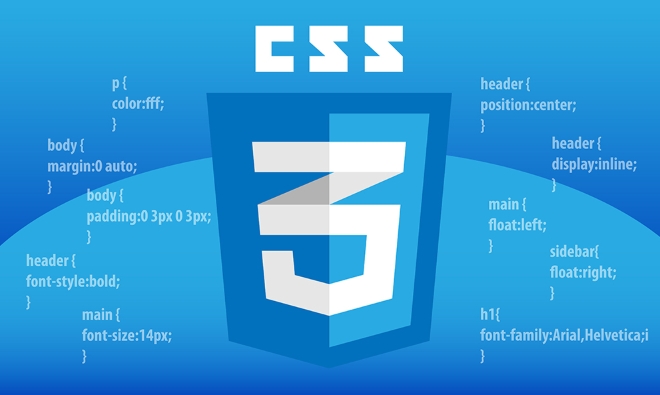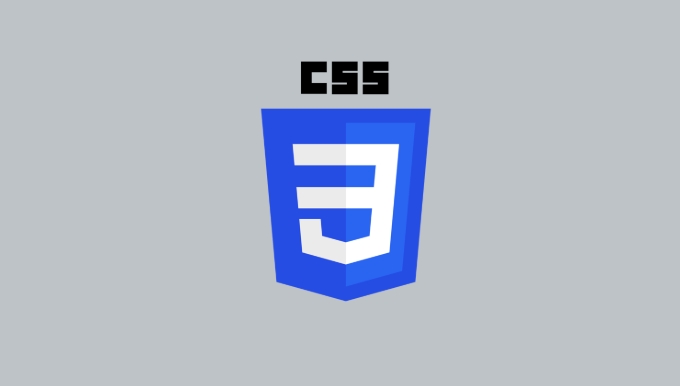object-fit and object-position can solve the problem of deformed and improper cropping of pictures or videos in web pages. 1. object-fit controls the filling method. Common values ??include fill (stretch fill), contain (keep the full display of proportion), cover (keep the proportion cover container), none (original size) and scale-down (suitable for dynamic content); 2. object-position controls the position of the crop area, and the syntax is similar to background-position, which can be used to specify visual focus; 3. Actual applications include mobile avatar cropping, card-style layout unified display, video embedding adaptation and other scenarios; 4. Pay attention to browser compatibility and test the effects of different proportions of pictures to ensure that key parts are not cropped. Mastering these two attributes can improve the performance control of media elements in different containers.

If you encounter problems with layout deformation and improper cropping when processing pictures or videos on a web page, it is likely that it is useless for object-fit and object-position . Although these two CSS attributes look inconspicuous, they can greatly improve the performance control of media elements in different containers.

object-fit: controls how media is filled
When you put an image into a container of fixed size, the image may be stretched or misaligned. At this time object-fit comes in handy.

It has several commonly used values:
-
fill: default value, fills the entire container, regardless of the scale, may be deformed -
contain: Keep scaled to ensure that the entire picture is displayed and the container may be white -
cover: Keep scaled to ensure that the entire container is covered and the image may be cropped -
none: original size, no zoom -
scale-down: similarcontain, but the smaller one shall prevail (suitable for dynamic content)
For example, if you put a horizontal picture in a 300x200 div, if you use object-fit: cover , the picture will be centered and cropped, which is suitable for the cover picture display; while using contain , the entire picture will be fully displayed in the box, which is suitable for the album preview scene.

object-position: controls the position of the crop area
When using object-fit: cover or none , the image may be cropped. So do you want to decide where to start laying? This is what object-position does.
Its syntax is similar to background-position, such as:
-
object-position: center;(default) -
object-position: top left; -
object-position: 50% 30%; -
object-position: 10px 20px;
If you have a close-up picture of a character that you want to always display with the face as the center, and even if the container scale changes, the head will not be cut off, you can use it in conjunction with object-fit: cover and object-position: center top .
This property is especially useful in responsive design, especially when it is necessary to emphasize a specific visual focus.
Practical application suggestions
In actual development, the following points are worth noting:
- Mobile avatar cropping : Use
cover positionto keep uploaded pictures always focused in the specified area. - Unified display of card-style layout pictures : set up a unified width and height container and
coverto ensure neat visuals. - Video Embedding Adaptation : Like pictures, the video tag can also use these two attributes to control the playback area.
- Pay attention to browser compatibility : mainstream modern browsers support it, but the old version of IE cannot.
In addition, don't forget to test the effect of images of different proportions in the container to avoid excessive blank spaces or critical parts being cropped.
Basically that's it. Mastering object-fit and object-position allows you to more flexibly control the performance of media elements in various layouts, and the code is also concise and clear.
The above is the detailed content of Mastering CSS Object-fit and Object-position for media. For more information, please follow other related articles on the PHP Chinese website!

Hot AI Tools

Undress AI Tool
Undress images for free

Undresser.AI Undress
AI-powered app for creating realistic nude photos

AI Clothes Remover
Online AI tool for removing clothes from photos.

Clothoff.io
AI clothes remover

Video Face Swap
Swap faces in any video effortlessly with our completely free AI face swap tool!

Hot Article

Hot Tools

Notepad++7.3.1
Easy-to-use and free code editor

SublimeText3 Chinese version
Chinese version, very easy to use

Zend Studio 13.0.1
Powerful PHP integrated development environment

Dreamweaver CS6
Visual web development tools

SublimeText3 Mac version
God-level code editing software (SublimeText3)
 CSS tutorial for creating loading spinners and animations
Jul 07, 2025 am 12:07 AM
CSS tutorial for creating loading spinners and animations
Jul 07, 2025 am 12:07 AM
There are three ways to create a CSS loading rotator: 1. Use the basic rotator of borders to achieve simple animation through HTML and CSS; 2. Use a custom rotator of multiple points to achieve the jump effect through different delay times; 3. Add a rotator in the button and switch classes through JavaScript to display the loading status. Each approach emphasizes the importance of design details such as color, size, accessibility and performance optimization to enhance the user experience.
 Addressing CSS Browser Compatibility issues and prefixes
Jul 07, 2025 am 01:44 AM
Addressing CSS Browser Compatibility issues and prefixes
Jul 07, 2025 am 01:44 AM
To deal with CSS browser compatibility and prefix issues, you need to understand the differences in browser support and use vendor prefixes reasonably. 1. Understand common problems such as Flexbox and Grid support, position:sticky invalid, and animation performance is different; 2. Check CanIuse confirmation feature support status; 3. Correctly use -webkit-, -moz-, -ms-, -o- and other manufacturer prefixes; 4. It is recommended to use Autoprefixer to automatically add prefixes; 5. Install PostCSS and configure browserslist to specify the target browser; 6. Automatically handle compatibility during construction; 7. Modernizr detection features can be used for old projects; 8. No need to pursue consistency of all browsers,
 What is the difference between display: inline, display: block, and display: inline-block?
Jul 11, 2025 am 03:25 AM
What is the difference between display: inline, display: block, and display: inline-block?
Jul 11, 2025 am 03:25 AM
Themaindifferencesbetweendisplay:inline,block,andinline-blockinHTML/CSSarelayoutbehavior,spaceusage,andstylingcontrol.1.Inlineelementsflowwithtext,don’tstartonnewlines,ignorewidth/height,andonlyapplyhorizontalpadding/margins—idealforinlinetextstyling
 Creating custom shapes with css clip-path
Jul 09, 2025 am 01:29 AM
Creating custom shapes with css clip-path
Jul 09, 2025 am 01:29 AM
Use the clip-path attribute of CSS to crop elements into custom shapes, such as triangles, circular notches, polygons, etc., without relying on pictures or SVGs. Its advantages include: 1. Supports a variety of basic shapes such as circle, ellipse, polygon, etc.; 2. Responsive adjustment and adaptable to mobile terminals; 3. Easy to animation, and can be combined with hover or JavaScript to achieve dynamic effects; 4. It does not affect the layout flow, and only crops the display area. Common usages are such as circular clip-path:circle (50pxatcenter) and triangle clip-path:polygon (50%0%, 100 0%, 0 0%). Notice
 Styling visited links differently with CSS
Jul 11, 2025 am 03:26 AM
Styling visited links differently with CSS
Jul 11, 2025 am 03:26 AM
Setting the style of links you have visited can improve the user experience, especially in content-intensive websites to help users navigate better. 1. Use CSS's: visited pseudo-class to define the style of the visited link, such as color changes; 2. Note that the browser only allows modification of some attributes due to privacy restrictions; 3. The color selection should be coordinated with the overall style to avoid abruptness; 4. The mobile terminal may not display this effect, and it is recommended to combine it with other visual prompts such as icon auxiliary logos.
 How to create responsive images using CSS?
Jul 15, 2025 am 01:10 AM
How to create responsive images using CSS?
Jul 15, 2025 am 01:10 AM
To create responsive images using CSS, it can be mainly achieved through the following methods: 1. Use max-width:100% and height:auto to allow the image to adapt to the container width while maintaining the proportion; 2. Use HTML's srcset and sizes attributes to intelligently load the image sources adapted to different screens; 3. Use object-fit and object-position to control image cropping and focus display. Together, these methods ensure that the images are presented clearly and beautifully on different devices.
 Demystifying CSS Units: px, em, rem, vw, vh comparisons
Jul 08, 2025 am 02:16 AM
Demystifying CSS Units: px, em, rem, vw, vh comparisons
Jul 08, 2025 am 02:16 AM
The choice of CSS units depends on design requirements and responsive requirements. 1.px is used for fixed size, suitable for precise control but lack of elasticity; 2.em is a relative unit, which is easily caused by the influence of the parent element, while rem is more stable based on the root element and is suitable for global scaling; 3.vw/vh is based on the viewport size, suitable for responsive design, but attention should be paid to the performance under extreme screens; 4. When choosing, it should be determined based on whether responsive adjustments, element hierarchy relationships and viewport dependence. Reasonable use can improve layout flexibility and maintenance.
 What are common CSS browser inconsistencies?
Jul 26, 2025 am 07:04 AM
What are common CSS browser inconsistencies?
Jul 26, 2025 am 07:04 AM
Different browsers have differences in CSS parsing, resulting in inconsistent display effects, mainly including the default style difference, box model calculation method, Flexbox and Grid layout support level, and inconsistent behavior of certain CSS attributes. 1. The default style processing is inconsistent. The solution is to use CSSReset or Normalize.css to unify the initial style; 2. The box model calculation method of the old version of IE is different. It is recommended to use box-sizing:border-box in a unified manner; 3. Flexbox and Grid perform differently in edge cases or in old versions. More tests and use Autoprefixer; 4. Some CSS attribute behaviors are inconsistent. CanIuse must be consulted and downgraded.






